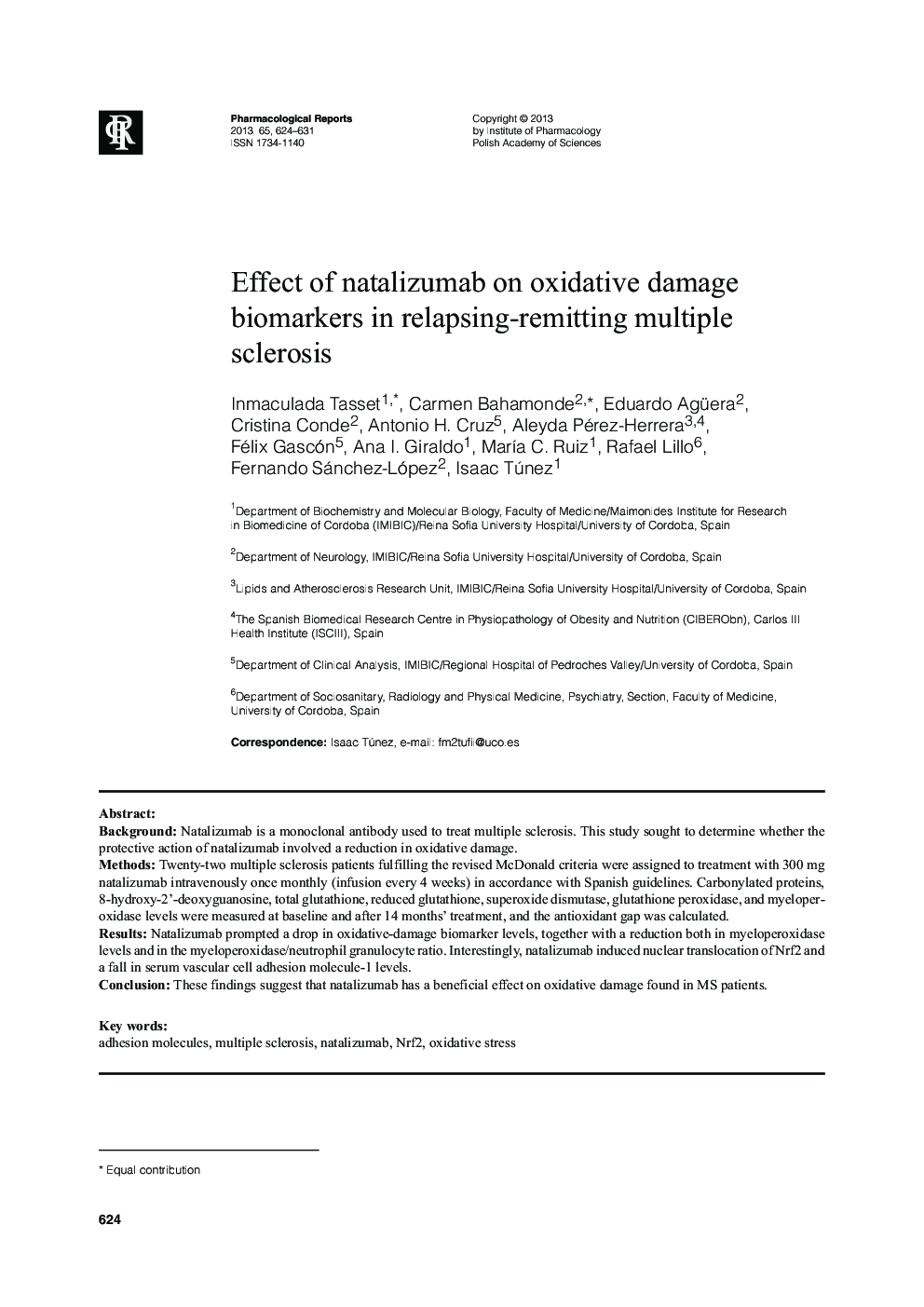| Article ID | Journal | Published Year | Pages | File Type |
|---|---|---|---|---|
| 2012324 | Pharmacological Reports | 2013 | 8 Pages |
BackgroundNatalizumab is a monoclonal antibody used to treat multiple sclerosis. This study sought to determine whether the protective action of natalizumab involved a reduction in oxidative damage.MethodsTwenty-two multiple sclerosis patients fulfilling the revised McDonald criteria were assigned to treatment with 300 mg natalizumab intravenously once monthly (infusion every 4 weeks) in accordance with Spanish guidelines. Carbonylated proteins, 8-hydroxy-2’-deoxyguanosine, total glutathione, reduced glutathione, superoxide dismutase, glutathione peroxidase, and myeloperoxidase levels were measured at baseline and after 14 months’ treatment, and the antioxidant gap was calculated.ResultsNatalizumab prompted a drop in oxidative-damage biomarker levels, together with a reduction both in myeloperoxidase levels and in the myeloperoxidase/neutrophil granulocyte ratio. Interestingly, natalizumab induced nuclear translocation of Nrf2 and a fall in serum vascular cell adhesion molecule-1 levels.ConclusionThese findings suggest that natalizumab has a beneficial effect on oxidative damage found in MS patients.
